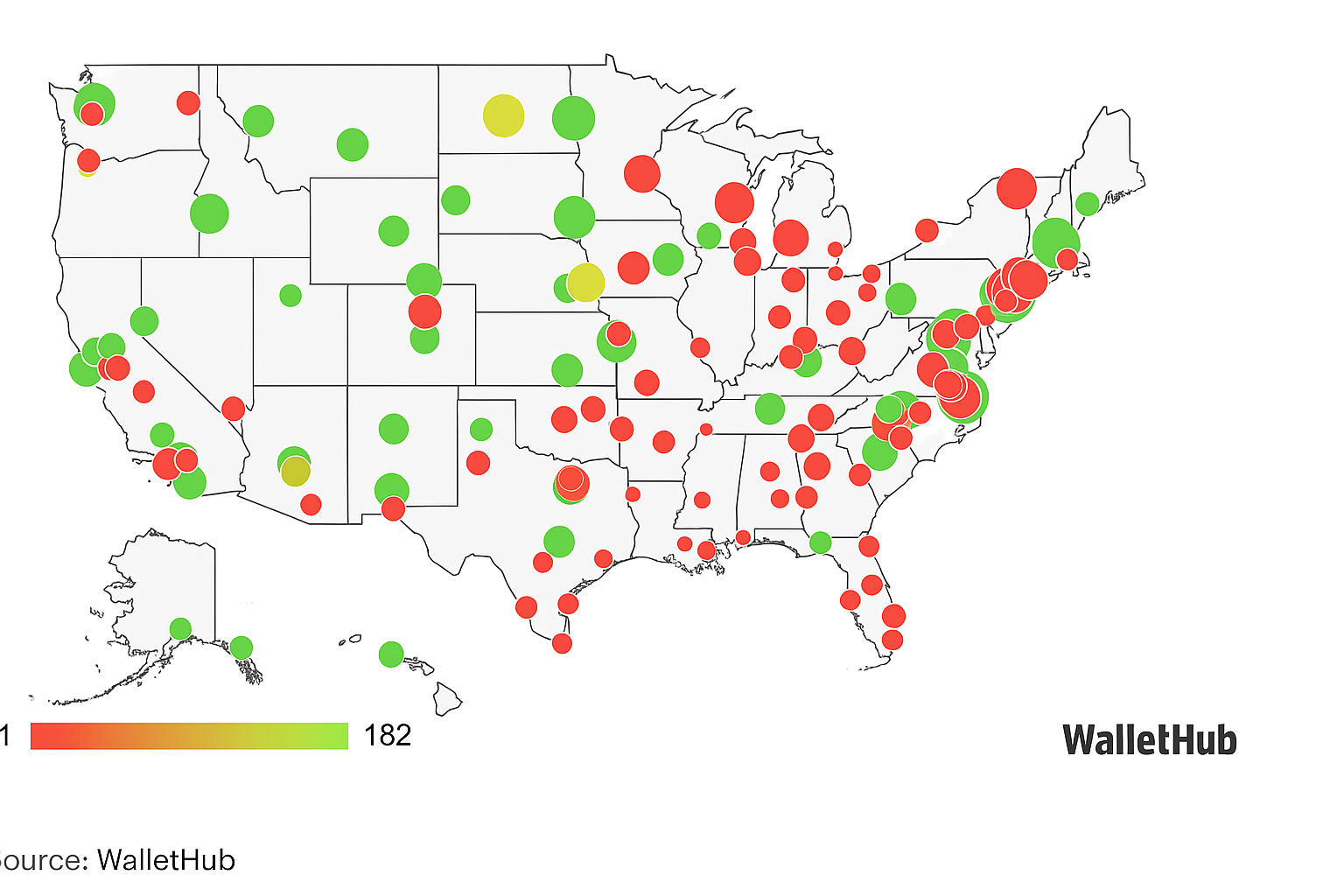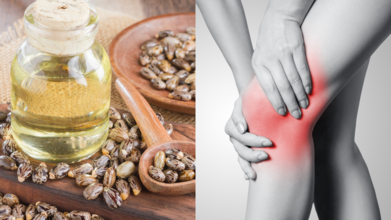- Health Conditions A-Z
- Health & Wellness
- Nutrition
- Fitness
- Health News
- Ayurveda
- Videos
- Medicine A-Z
- Parenting
- Web Stories
Anxiety And Depression Could Be Countered With Meditation, Study Reveals

Credit: Canva
Anxiety and depression have become a modern-day epidemic, affecting over 300 million people worldwide, according to the World Health Organization (WHO).
While researchers continue to investigate risk factors, a new study, conducted by a team from Icahn School of Medicine at Mount Sinai has identified an effective approach that may help reduce or completely eliminate symptoms of anxiety or depression. It found that meditation influences key regions of the brain responsible for emotional regulation and memory like the Hypothalamus and Amygdala. Researchers suggest that their findings could help shape meditation-based treatments for psychiatric conditions like anxiety, depression and other related conditions.
Role of Meditation in Mental Health
Meditation has been a cornerstone of Ayurvedic medicine and has long been integrated into various religious and spiritual traditions across the East. Today, the term "meditation" serves as an umbrella for a range of mindfulness techniques, including spiritual meditation, visualization, and focused awareness practices.
Meditation has been linked to a variety of health benefits, including:
- Lowering blood pressure
- Improving sleep quality
- Boosting the immune system
- Aiding digestion
How Was The Study Conducted?
Researchers worked with eight patients suffering from drug-resistant epilepsy who already had electrodes implanted deep in their amygdala and hippocampus. These electrodes allowed for continuous monitoring of brain activity. Participants engaged in a ten-minute guided "loving-kindness meditation," a practice focused on fostering well-being for oneself and others. "Traditionally, it has been challenging to study these deep limbic brain regions in humans using standard methods like scalp electroencephalogram (EEG)," said Christina Maher, a neuroscience PhD student and the first author of the study.
The results showed that meditation triggered alterations in the strength and duration of beta and gamma brain waves. These kinds of brain waves are affected in mood disorders like depression and anxiety,” said Dr. Ignacio Saez, associate professor of neuroscience, neurosurgery, and neurology at the Icahn School of Medicine and senior author of the paper. “The possibility of willfully controlling these through meditation is pretty amazing and may help explain the positive impact that these practices have on individuals.
However, it is pertinent to note that the study was conducted on a small sample size, and researchers only assessed the effects of a single meditation session without examining the impact of repeated practice or long-term benefits.
These 10 US Cities Are The Most Stressed In 2025

Credits: Canva
Stress in America isn’t just about inflation or economic outlooks. It’s also about where you live. That’s the takeaway from a recent deep-dive by WalletHub, which ranked 182 U.S. cities from most to least stressed. And the results reveal more than just financial anxiety — they uncover a deeper story of how work culture, public safety, healthcare access, and family strain can weigh heavily on the mental health of entire communities.

Before we name the cities topping the stress charts, it’s worth understanding what WalletHub actually measured. The study broke stress down into four key categories:
Work-Related Stress: Based on metrics like unemployment, underemployment, hours worked, and commute times.
Financial Stress: Includes median credit scores, personal debt, poverty, and the cost of living.
Family Stress: Measured by child care affordability, separation/divorce rates, and emotional support networks.
Health & Safety Stress: Factored in mental health stats, suicide rates, access to healthcare, and crime levels.
Each of these categories carries its own weight — literally and figuratively — and when they pile up in one area, the pressure cooker effect kicks in.
Top 10 Most Stressed Cities in the US
| Rank | City | State |
|---|---|---|
| 1 | Detroit | Michigan (MI) |
| 2 | Cleveland | Ohio (OH) |
| 3 | Baltimore | Maryland (MD) |
| 4 | Gulfport | Mississippi (MS) |
| 5 | Memphis | Tennessee (TN) |
| 6 | Shreveport | Louisiana (LA) |
| 7 | Philadelphia | Pennsylvania (PA) |
| 8 | Toledo | Ohio (OH) |
| 9 | Birmingham | Alabama (AL) |
| 10 | Jackson | Mississippi (MS) |
Top 10 Least Stressed Cities in the US
| Rank | City | State |
|---|---|---|
| 182 | South Burlington | Vermont (VT) |
| 181 | Fremont | California (CA) |
| 180 | Sioux Falls | South Dakota (SD) |
| 179 | Irvine | California (CA) |
| 178 | Burlington | Vermont (VT) |
| 177 | Fargo | North Dakota (ND) |
| 176 | Bismarck | North Dakota (ND) |
| 175 | Lincoln | Nebraska (NE) |
| 174 | Overland Park | Kansas (KS) |
| 173 | Boise | Idaho (ID) |
What’s Fueling the Stress?
1. Detroit and Cleveland
Detroit tops the list, driven by high poverty rates, low credit scores, and elevated crime. Cleveland isn’t far behind, sharing many of the same economic stressors. According to the Bureau of Labor Statistics, both cities have unemployment rates that regularly exceed the national average. Add in high foreclosure and personal bankruptcy rates, and it’s easy to see why financial pressure is sky-high here.
2. Baltimore and Philadelphia
Baltimore and Philadelphia deal with a trifecta: public safety concerns, overburdened health systems, and economic disparity. The CDC reports that these cities have above-average rates of depression and chronic illness, compounding stress and making day-to-day survival more exhausting for residents.
3. Mississippi’s Hot Spots: Gulfport and Jackson
Mississippi may be known for its southern charm, but WalletHub’s data shows a much more complex reality. Gulfport ranked No. 1 nationwide for family stress, pointing to challenges in childcare access, marital strain, and emotional support systems. Meanwhile, Jackson is struggling with deep-rooted financial stress — including one of the country’s lowest median credit scores and one of the highest poverty rates. It’s a dual crisis of emotional and economic strain.
4. Memphis, Shreveport, Birmingham, and Toledo
Each of these cities faces unique challenges, but they share a few critical problems: aging infrastructure, low healthcare affordability, and weak job markets. Memphis, for instance, has long battled with healthcare access, while Shreveport struggles with crime and limited public health resources.
Hidden Cost of Financial Stress
In a 2025 CNBC/SurveyMonkey survey, 73% of Americans reported being financially stressed — citing rising grocery bills, stagnant wages, and debt as top culprits. And these aren’t just numbers. According to Marist University’s Joanne Gavin, food prices alone have jumped 23.6% since 2020, squeezing families who are already living paycheck to paycheck.
These financial pressures bleed into every part of life — affecting relationships, physical health, and the ability to make long-term decisions. In cities already buckling under the weight of poverty or high unemployment, this becomes a generational issue.
How Health and Safety Are Crucial Stress Marker?
WalletHub considered mental and physical health to be core dimensions of stress. Cities with higher rates of depression, chronic illness, and untreated medical issues ranked worse — and for good reason. When adults can’t afford routine care, or when emergency rooms are overrun, people stop seeking help. That erodes mental resilience over time.
In cities like Jackson, Baltimore, and Detroit, public health infrastructure simply can’t keep up. And that lack of care is showing up in everything from increased suicide rates to binge drinking.
Why Family Stress Is The Silent Strain?
Childcare, divorce rates, and lack of emotional support all played into WalletHub’s rankings — and here’s where cities like Gulfport really stood out (for the wrong reasons). Ranked #1 in the nation for family stress, Gulfport’s issues go beyond money. Limited access to childcare workers, high divorce rates, and fewer emotional support systems are leaving parents and caregivers feeling isolated and burnt out.
Former U.S. Surgeon General Dr. Vivek Murthy warned in a recent statement that parental stress directly impacts children. When caregivers feel unsupported or overwhelmed, kids experience those stressors in both direct and indirect ways — shaping mental health outcomes well into adulthood.
What This Means for Mental Health Policy?
These rankings aren’t just trivia. They’re a wake-up call for cities, state leaders, and public health officials. Mental health isn’t solved with therapy alone — it’s shaped by your zip code, your grocery bills, your commute time, and how safe you feel walking down the street.
“Where you live can play a big role in how stressed you are,” said WalletHub analyst Chip Lupo. “Cities with high crime rates, weak economies, less effective public health and congested transportation systems naturally lead to elevated stress levels.”
As policymakers look to improve mental wellness nationwide, this data should be front and center.
While some stress is unavoidable, much of it is systemic. Where you live affects your stress levels as much as — if not more than — your personal choices. As this study shows, urban planning, healthcare investment, and family support systems all have a role to play in building more resilient communities.
And for now, cities like Detroit, Gulfport, and Jackson are calling for help — not just from their residents, but from a national system that must catch up to their needs.
Can Ricinoleic Acid in Castor Oil Help Reduce Arthritis Pain and Inflammation?

If you grew up in an Indian household, your grandparents must have handed you a spoonful of castor oil for just about everything. It was their cure-all. Turns out, they were not entirely wrong, at least when it comes to joint pain. Castor oil contains a compound called ricinoleic acid that is now being looked at for its potential to ease arthritis-related pain and inflammation. With more people turning to gentler, natural options alongside standard treatment, this old remedy is quietly making a comeback.
What exactly is ricinoleic acid?
Ricinoleic acid is a monounsaturated omega-9 fatty acid. It makes up around 90 per cent of castor oil’s composition and has been shown to have anti-inflammatory, analgesic, and antioxidant properties. In simple terms, it can help reduce swelling, ease pain, and possibly shield tissues from further damage.
Why do people rub oil on sore joints?
Topical use of castor oil is not new. Ayurvedic and folk traditions have long endorsed it for joint stiffness, swollen knees, and general aches. The practice usually involves warming the oil slightly, applying it generously over the affected area, and covering it with a warm cloth or compress.
Heat improves circulation and opens up pores, which may help the ricinoleic acid penetrate deeper into the skin. Once inside, it is believed to interact with the body’s prostaglandin system, the same compounds that trigger inflammation and pain during arthritis flares.
What does science say?
Small animal studies have shown that ricinoleic acid can reduce swelling and pain in rodents with inflamed paws and joints.
Human evidence is still a bit thin but not non-existent. A few small clinical trials suggest that castor oil packs may help reduce arthritis symptoms when used regularly. Reportedly, patients with knee osteoarthritis who used castor oil packs reported reduced pain and stiffness after four weeks. However, the sample size was small, and the study was not double-blind.
Is it worth trying?
If you are someone who is dealing with arthritis and over-the-counter painkillers are not helping you, castor oil could be a gentle, low-risk addition to your routine. However, it is worth noting that it is not going to reverse joint damage or magically un-stiffen your limbs overnight. What it might do is reduce the pain, especially if used regularly with warm compresses and gentle massage.
Tips for trying castor oil at home:
- Buy cold-pressed, hexane-free castor oil. You want the pure stuff, not a chemical soup.
- Warm it slightly before applying. Use a hot water bottle or towel over the area for 20–30 minutes.
- Do a patch test before full use, especially if you have sensitive skin.
- Be consistent. Try it a few times a week for at least a month.
- Avoid broken skin or open wounds, since oil can trap bacteria.
These Lifestyle Tweaks Can Cut Chronic Disease Risk, Even with Bad Genes

When it comes to chronic diseases, your genes might have a say, but they are not everything. A massive review of 483 studies shows that seven everyday habits can seriously shrink your risk of developing long-term health problems, even if your DNA is not exactly on your side. These habits make up Life’s Simple 7, backed by the American Heart Association, and they do more than just protect your heart; they help pretty much your whole body run better.
Here is how each one works:
1. Quit Smoking
If you smoke, stopping is hands down the best thing you can do for your health. Cigarettes do not just mess with your lungs; they quietly wreck your heart, blood vessels, and even your brain. The toxins cause chaos all over, raising your chances of everything from strokes to high blood pressure. But the good part is that the moment you stop, your body starts to bounce back.
2. Move More
Think of sitting too much like being stuck in slow traffic; every system gets backed up. Regular movement, even just 30 minutes a day five times a week, can make a real difference. It lifts your mood, improves your circulation, keeps your blood sugar steady, and helps with weight control. Whether you like dancing in your living room, cycling, or walking your dog around, just keep your body in motion.
3. Eat Nutritious Food
No one is asking you to live off green vegetables. Just get more real food on your plate like fresh vegetables, fruits, whole grains, healthy fats, and lean proteins. These foods fight inflammation, fuel your metabolism, and keep blood sugar swings in check. Give up on unnecessary ingredients and sugar overloads.
4. Watch Your Weight
It is not about squeezing into skinny jeans. Carrying extra fat, especially around your waist, raises your risk of diabetes, heart disease, and other chronic issues. Managing your weight with good food and regular activity keeps pressure off your organs and helps dial down the kind of inflammation that quietly fuels disease.
5. Keep Blood Pressure in Check
High blood pressure rarely shows up with warning signs, but it can do real damage behind the scenes. It strains your heart, wears out your arteries, and messes with your kidneys. Staying in the healthy range often comes down to the basics like moving more, eating less salt, getting enough potassium, and managing stress where you can.
6. Steady That Blood Sugar
If your blood sugar runs high for too long, it starts harming everything from your nerves to your kidneys. A healthy diet and regular movement can keep it under control, even if diabetes runs in the family. Swap out white bread for whole grains, eat meals at regular times, and try not to include sugar in everything.
7. Mind Your Cholesterol
Not all cholesterol is evil, but the bad kind can clog up your arteries like gunk in a pipe. However, you can raise your good cholesterol and lower the bad with a few key choices, like eating more fibre, cutting back on saturated fats, and getting moving. The result is smoother circulation and a lower risk of heart problems.
You cannot pick your genes, but you can choose your habits. These seven lifestyle changes are a powerful strategy to delay or even prevent chronic diseases, regardless of hereditary risks.
© 2024 Bennett, Coleman & Company Limited

